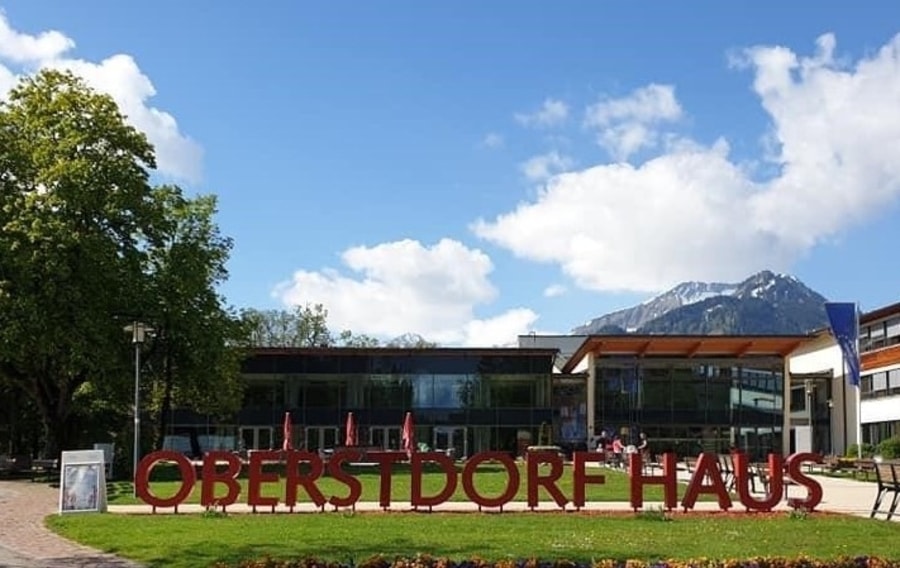The complete walk through guide to the Oberstdorf Adult Ice Skating Competition
If you are reading this then you are already considering going to the Oberstdorf International Adult Ice Skating competition, one of the three official I.S.U international ice skating competitions (the other two being the Lake Placid International Ice skating competition and the Innsbruck Winter World Masters Games). It is a wonderful competition in an utterly beautiful place. My skating partner and I have attended the Oberstdorf ice skating competition, so the information is first hand. It is a big competition, so here are some great tips and the running order of the competition to make it go smoothly. You are going to have a wonderful time and will be back year after year.
There are certain things you are going to need to know like the accreditation process, ballot draws, skating orders, practice times, patch ice times, coaching, the competition itself, video streams and lots of little things you might not have thought of, like how to get your music on in practice times. So here we go……
Advertisement (Link to Booking.com – Commissions earned)
Booking.comA taste of the magic
When I am writing an article, I usually get right into the detail. But on this occasion, I am am going to take a chance on the magic. The magic that is the Oberstdorf competition.

Oberstdorf is such a beautiful place. I mean it’s shockingly pretty. If you have never been to the Alps before, like I hadn’t, it really takes your breath. It’s like something from the sound of music. The competition usually takes place in May, so the fields are green pastures, dotted with thousands of butter cups. The mountains still have snow on the top and the constant sound of cow bells makes for an unforgettable alpine experience.

Another thing you may not have come across before, is such lovely people at a competition. Everyone is so nice, even people competing directly against you are so friendly. If you fall during your program, the crowd cheer when you get up. They all want you to do well. The people that work at the rink are lovely, as are the locals. You might be scared if it’s your first time, but if you go, you won’t regret it, the competition is pure magic.

Before you set off try reading our article on traveling with ice skates, there is tons of great advice for traveling with your ice skates on a plane including their weight and so much more……
What is the ice like in Oberstdorf?
Amazing, it is lovely. I heard rumors that they use the melt water off the mountains. I am not sure how true that is, but I can tell you that the ice is brilliant. Its fast, I mean really fast and seems to have a translucent appearance to it rather than the white ice I am used to at my local rink.
They really look after the ice out there. They cut the ice really often, with new machines. They patch any holes by hand and then machine the surface. It is probably the best ice I have ever skated on. They really look after it.
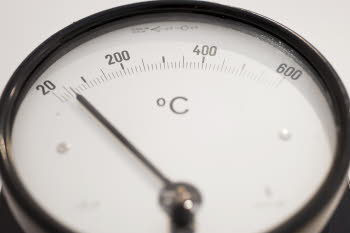
Is the rink heated?
Yes, its a lovely temperature all the time. I am not sure what the temperature is, but it is great deal warmer than my local rink, which is freezing. The temperature in the rink isn’t to cold and not too warm, it is just right to train in.

Navigating your way around
OK, so it’s your first day in Oberstdorf. It’s time to drop your bags at your accommodation and head off to the rink to get your accreditation. First you will want to orientate yourself at the rink.
The lay out of of the ice rink at Oberstdorf (Eislaufzentrum) is, as you walk in:
Firstly the ice rink in Oberstdorf is beautiful. The rink itself contains three ice pads, but we will get to those in a minute.
A lobby area then the kiosk that you pay at, then past that, the Olympic sized rink in front of you (rink one) and to the right another Olympic sized rink but without all the stadium seating (rink two). To the left is rink three, on the left as you walk in, which is used for public ice during the competition. As a competitor, you can also use this ice pad.
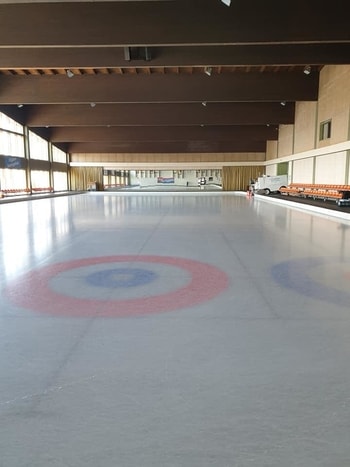
There is a cafe area to your right, next to rink two and this is where the toilets are too.
Accreditation
Next you are going to want to get your accreditation. This is basically a security badge that you wear around your neck. Think of it as a back stage pass.
So the accreditation room is on the left before you go through the turnstiles, down a corridor. There are normally signs on the doors to help you. Of course, the room locations are prone to change each year, but this is where it was when I went and I can imagine it being the same each year.
So, when you get into the accreditation room, after giving your name etc, you are going to be given some stuff. Now, again this might change a bit year on year, but I just went and this is what I got:
A large envelope with an A4 booklet in, with all the competition times and ballot times.
A smaller envelope with your accreditation/competitor pass, a patch ice I.D card and an advice leaflet on attending patch times.
You will also get to choose the lanyard color you would like. Well you got to last time I went anyway. Also you may be given your competitors medal early, though sometimes this can be given at the victory ceremony.

The Accreditation/competitors Pass.
This has your name on it and the abbreviation of your country. Oh by the way, if you have never seen your name next to your country in an international competition, then this is a pretty cool moment. But anyway, this pass hangs around your neck on the lanyard and allows you free entry to the main rink. Anybody not competing has to pay an entry fee to watch, but you will get unlimited access all week to watch whatever skating you want as you are a competition.
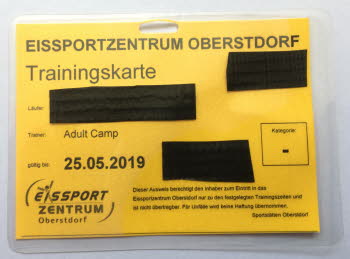
Patch ice training card
Also you will be given a different colored pass. This is for your patch ice sessions. Mine was bright yellow, but they might change the color each year. This card has your name on it and a barcode. This is used to scan into the registration machine on the practice rink and logs you into the session.

Oberstdorf competitors medal 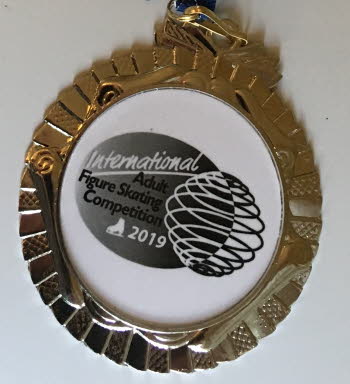
Oberstdorf competitors medal close up 
Free lanyard
Lanyard and competitors medal
You will be given a free lanyard (you get to choose the funky color) and a competitors medal. Attach both passes to the lanyard. You will see loads of people walking round with their lanyards on.
You may also be given your competitors medal. This was generally given at the victory ceremony, but is now given at the start of the competition.
Information book
This is really handy. It has a greeting from several members of the ice skating community and from local dignitaries. Usefully, it has your competition day and time as well as all of the other skaters in the competition. There is also a listing of the ballot draw days and times. This is important as you need to attend your ballot draw. It is here you will find out which group you are in for the competition and the order of your skating.
How to find your patch ice times
You will most likely have paid for your patch ice times in advance as per the organization of the competition. Generally, you will have been sent an email with your allocated patch times on, but if not, you can find them at the rink. These are all posted on the wall, on sheets. When we went, these were next to the public training rink three. This is on the left as you walk in. They were stuck to the wall to the right of the doors for rink three.
Use the tables to check out your patch ice times. Make a note of them and what rink they are in. They were in the Olympic sized rink without the seating (rink two) when we went.
If, for some reason you cant locate them, ask in the accreditation office. They will most likely have them there, but if not, they will at least be able to point you in the right direction.
How to find the draw room
It’s definitely worth checking out where the draw room is before you need it. So, assuming that the draw room is the same as previous years, you need to; as you come into the rink, go straight on past the two rinks to your left and right and carry on forward to the main rink, the one with the stadium seating, rink number one. As you get into the the rink, turn immediately right. Go up the stairs, that go up the side of the seating. Go through the door in front of you and the draw room is through there. When you get in there, you will see chairs set out and a couple of desks at the front, that is the ballot room. This is where you will go the day before you skate your competition, but more on the draw process later, when you read the ‘attending your draw’ section of this article.
Training in Oberstdorf
Booking patch times
The most common way to book patch times is in advance. When you book the competition, there is a place on one of the forms to request patch ice training slots. You pay for these slots at the same time as you pay for your competition. When we went out, we only booked two training slots. Then when the literature starts to feed through, closer to the competition, we found out that some skaters had booked a lot more than us. It can be a bit disheartening to read that your competing athletes are having practice every day on the run up to the competition, when you only have two booked. So may be in future, I would book three or so training patches. I still don’t think I would book every day though. Oberstdorf is a beautiful place, so you don’t want to be chained to the rink every day. Its nice to get out and see some of the town and attractions.
That said, there were skaters out there when we were, who were booking patches whilst they were out there. This can be a bit risky though. There are only so many people allowed on a patch at once. If the patch you want is booked up with people who have pre-booked, then you are not going to get on. That said, if you are out there and you want to get some extra training patches in, then give it a go, if you don’t ask, you wont get, as they say.
Another point to note is, that if you have pre-booked your patch, you dont get to say when it is when you book it. If you book for example, three patches. You will get an email closer to the competition, telling you what days and times you have been given. If you do get any really poorly timed ones, then email the rink back and let them know. An example of one that you would want to change might be if you are given one after the day you compete for example.
Attending your patch ice training session
The times are listed on the wall, of all the patch ice sessions, including which ice pad it is on, so having found out your time, its time to get training.
Get to the rink early, the patch ice times are run with a great deal of precision, they start when they are supposed to and end right on schedule. Don’t forget to leave a bit of time if you want to do a bit of an off ice warm up.
When you get to the patch session, you will be skating with people that are in your discipline. So ice dancers go on together, they wont mix solo skaters with pairs etc.
Before you go out to Oberstdorf, consider whether you should get your ice skates sharpened and how long before you go should you get them sharpened to give you the right feel for skating your competition. I have written an informative article with loads of research on ice skate sharpening including how often and how long before a competition to get your skates sharpened and loads more about sharpening that may be knew and possibly some stuff you didn’t?
Don’t worry if they look better than you
You will probably notice that some of the people skating on the patch ice session are a great deal better than you. It is easy to start thinking, “I am never going to beat these people”. Don’t worry, because although you are all from the same discipline, you are not all from the same level. So they will mix bronze level with gold level. Half the people on the ice you won’t even be skating against. So chill out. Its your patch ice too, so get out there and do your thing, just be respectful and you should get the same back.

Why do they wear fluorescent vests on patch ice?
Well some rinks operate this process, if your not used to it, it can look a bit weird, but its a good idea, here is why. If the patch is busy, everyone has to get out of the way for someone who is on the music, but who’s on the music? Answer, the person in the fluorescent vest. They don’t use this system all the time, but when patch is busy, be prepared to wear the fluorescent vest. Its a good system as people easily recognize who is on the music and make way for you.
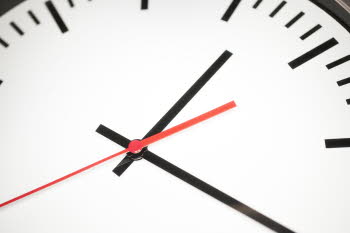
Patch ice duration
Patch time duration is about an hour, but the exact times can be found from your documentation, or from the rink. If you don’t know, don’t worry, it will be obvious when the session is over, all the skaters will get off.
Get your first patch in
Yes, get your first patch in, you will find that once you have skated, you will be less worried. You can get a feel of what the ice is like, get a feel for the rink and generally get your feet in. Things get easier from there on in.

Using the computer control to login for your patch
The photo above is just a joke, really, its quite a simple bar code scanner and a screen.
If you are anything like me, you get to your patch training ice at your local rink, you pay the person on the way in and that’s it, simple, there’s no technological knowledge needed. At Oberstdorf, things are a bit more modern. So go into the rink (this is the training rink [rink three], the one that is Olympic size, but without the stadium seating. You will see where the music player is. On the back of the music player, off the ice, there is a login terminal with a screen and a bar code scanner. Login in using the bar code on your ice training card. The screen will display your name and allocate you a number. So if there are 12 people on the patch, it might say you are number 11. Behind you there is a rack on the wall with numbers on. put your yellow card next to the number you have been given. When on the ice, put your CD in the rack next to your number. So basically, the computer is creating an order for everyone to get a chance for them to have their music played.
In reality, when we were there, the CDs were just piled put anywhere in the rack or piled up on top of the CD player. The competitors are all so friendly, they put the music on for you and you each arrange among yourself who is going next. Its all fairly laid back. I suppose if the patch session was really busy, the number order might come into play, but it didn’t when we went.
The numbers on each patch are restricted anyway, at least during the competition, so there were never too many people on the ice when we practiced.

The draw process
Finding out when your draw is
OK, before you attend your draw, you need to know when it is. When you first arrived and you picked up all your ID and accreditation, you will have most likely been given a fairly thick booklet with all of the skaters names in, their competitions and a list of the draw times. This is where you should look first. When we went the draw times were listed pretty close to the start of the booklet, you look for your category e.g Ice Dance Bronze, not your name. This year all the draws took place the day before your competition, at 6 pm, but this may be prone to change year on year, so CHECK FOR YOUR DRAW. So if you are not sure that it is the day before you skate and you cant find your category in the booklet, then go and ask in the accreditation office, they should know for sure, plus they are really helpful, so don’t be afraid to ask.
What is the purpose of an ice skating competition draw?
Well, in a nutshell, its to establish the order you are going to skate in. So lets say that you are an ice dancer like me and my partner. You know that there are 14 people in your category, this ice dance so that means there are seven couples. The idea of the draw is to create an order that the couples skate in and to create a couple of groups to make the numbers manageable.
If you are a solo skater and there are 26 people in your category, they are going to define the order and split you up into three or four groups.
So, that’s the point of the draw, to decide the order that you skate in and to put you into groups.
What should I expect in an ice skating competition draw at Oberstdorf?
Well, you are all going to turn up in the draw room at the time of your draw. Its not too formal an affair, so don’t worry. There are a few rows of seats for the skaters and at the front some desks for the officials. There will be one or two officials conducting the draw and and one or two officials recording the results.
On the tables will be a set of wooden balls and a velvet bag. However many skaters their are in that category, or couples for ice dance and pairs, or teams for synchro, that is how many sequential balls will be put into the bag. So for example, if there are 7 couples in the Ice Dance Free Bronze category, balls numbered one to seven will be placed into the bag.
They will call your category, for example Ice Dance Free Bronze. All the skaters from that category will go to the front. Then the official will ask for a random number off one of the skaters and the draw will begin. Lets say the random number is six, then the official may go down their list and say, OK, Italy draws first. So the one of the couple from Italy will draw one wooden ball from from the bag, then the next couple and the next until there are no couples left and no balls in the bag.
The ball you draw, is the number that you will skate in. If you draw ball number one, you will skate first, ball number two, you will skate second, etc, etc.
Your skating group
So you have your number, now the official will put you into groups. So they may say, “numbers one to four are in group one, numbers four to seven are in group two”. So there you are, you now have your number and your group. You are now all ready for competition day, which is what I shall cover next.
Competition day
Where do I find out when my official time is?
Your official practice time is listed in the booklet you were given from the accreditation process. It is also listed on the boards at the rink.
Official practice
OK, so it’s the day of the competition. You will be given the official practice slot. This is a very valuable time. There is every chance that you may not have been on the main ice pad yet in rink three. Your practice ice will give you he chance to to skate on the ice that you will perform on later.
What should I do in my official practice time?
Well, first off warm up a little, get your legs in, get used to the ice. take a look around, make yourself familiar with your surroundings. Try to get to the point where you feel more at ease being on the main rink. Don’t spend too long warming up though, as you need to establish where you are going to start your program. Once you have decided where you are going to start, run through the start of your program. This will show whether your starting point is the right place for you to have enough room for the first part of your program without running into the barrier.
All this advice on on what to do in your practice is what helped me, its a suggestion. If you feel it will help you then, do the same. If you don’t, then do your own thing. It is more important to do or go through what you need to do, in your head, to relax you and to prepare for your competition.
How will I know when my practice time is beginning/when to get on?
When your practice time is about to start there will be an announcement over the P.A system. They will announce your category and inform you that it has now started, they will also announce how long that practice time is.
Working out your start point
You can use this valuable time on your practice ice to work out where you are going to get onto the ice and where you are going to position yourself at your start point. It is quite likely that when you have practiced your program at your local home rink, you used the hockey markings to work out where to start. There are no markings on rink one, the main competition rink at Oberstdorf.
There are however, plenty of reference points that you can use. There are flags hanging from the ceiling, advertisements around the barrier of the rink. You could use the judges tables or seating to give you reference points to indicate where your start point is.
How long is your official practice time?
Answer – not long. You only get 15 minute on your official practice. I did wonder whether it was worth going to mine, as it was at 6.30 am and I didn’t skate the competition until 12.30. I am very glad I did. It gives you chance to not only work out how and where you are going to start, get on and get off. Also it gives you the chance to get a feel for your surroundings. You don’t want the first time you step onto the ice to be your competition.
How will I know when my practice ice is over?
They will announce through the P.A system when your practice ice is about to end. I cant remember whether they say you have five minutes left or whether is three minutes. The bottom line is, that they will give you a warning when you only have a few minutes left.
They will then announce through the P.A system when your practice time is over and will ask your group to leave the ice.
Attending your competition skate
What video coverage is there during the competition?
There is plenty. My advice would be to go and watch some other peoples competition, not in your category by the way, just other skating you find interesting. This will give you a good idea of the lay out of things and where the video coverage is.
There is a camera for the live video stream, that is normally quite high in the middle of the rink by the judges. This footage is also broadcast live in the rink on a projected video wall, this acts as a close up for the crowd. There is also a camera operator taking still images.
There is a video feed in the kiss and cry box as well. This also records sound. There are also still images being taken in the kiss and cry box.
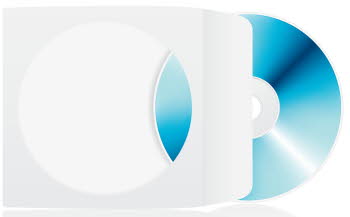
Handing in your music
You will have two copies of your music, both with your name on and the category you are skating in. Give one to the person who plays the music This is normally at the sound desk which is the closest official to the kiss and cry box. The other copy, give to the person who is putting you on the ice. This is just in the event of the first disk failing. Don’t leave the spare in your bag in the changing rooms.
How does the warm up process work?
Well, as well as your official practice, earlier in the day, you will get an official warm up before you skate in your competition. Each group get there warm up. So for example, say you are competing in Women’s Bronze Free Skating there are 26 in your category. Lets say that you know from your draw, that your category was split up into three groups, group one, group two and group three. Group one will get a warm up, group two will get a warm up and group three will have a warm up.
How long do you get for your official warm up?
Well it seems to depend on you your discipline. My partner and I noticed that ice danced got a six minute warm up, whereas Women’s Bronze Free only had five minutes. The times seem to differ for each category, but most of them seemed to be five or six minutes.
All of the warm up times are official and in line with ISU guidelines.
What happens if you are the first to skate after the warm up?
If you are the first to skate in your group, you will be skating right after the warm up. So when they announce that the warm up is over, everyone will leave the ice except for you, if you are the first to skate in the group.
Wait down the end of the ice where the entrance is, the kiss and cry box end. You can keep moving, but don’t go further than about ¼ or a ⅓ of the way down the ice as your practice is over. When it is your turn to skate your name will be announced. Then make your way to your start point.
Skating your program in competition
Take some water and tissue with you on the day you skate
This might seem a bit strange, but it’s a really good idea. The water is because Oberstdorf is at a fairly high altitude and your mouth and lips tend to dry out easily. Also, when you are nervous your mouth tends to go a bit dry. So if you have some water handy, you can always have a few sips before you go on. The tissues, well that’s to wipe or blow your nose if you need to, simple.
Organize who is putting you onto the ice before hand
Organize who will be putting you onto the ice. OK, in an ideal world, you would have your coach with you, if your coach is out there with you, then that is the logical choice. In reality, there are loads of skaters out there without there coaches, in fact the majority of skaters.
Choose someone to put you on the ice who has a calming influence on you. They can not only give you a few calming words before you go on, they can help in other ways. They can hold your water and your CD and be there with you in the kiss and cry box later.
Dealing with the nerves
So, you are going to be nervous, it is perfectly normal. I will say that again, it is perfectly normal.
I am a nervous skater when it comes to performing in competition, so I dont know whether that makes me the best or the worst person to offer advice. Here is what I did before I went on. If you think it might help, then take it or leave what you think doesn’t resonate with you.
Try keeping moving
Before you go on, you will be buzzing. You have a ton of adreanaline coursing through your body. Your muscles will be anticipating some work, they want something to do. What I did was keep moving. There is plenty of music around from other people skating, so I had a bit of a dance, keeping moving, bopping around, talking with your friends.
Keep warm, keep moving, little exercises or going through sections of your program off ice. Some people had earphones on listening to music. I dare say that a lot of them were listening to their program music. I think the bottom line here is keep warm, keep moving, for me anyway. Some people may like to sit quietly in the changing rooms, but that idea didn’t appeal to me, so do what you think.
When do I get onto the ice?
You get onto the ice when the person before you has finished and they have got off and are in the kiss and cry box. This gives you a valuable couple of minutes to get your feet in and find your ice legs whilst the judges are working out the scores for the previous skater. They will also show slow motion replays of the previous skaters whilst the scores are being read.
Can I skate a little before they call my name?
Yes, you can do runs on a small circle, skate around a little. Just don’t take it too far. This is not your warm up. Don’t go skating off down the rink. The judges wont be impressed. You can have a little skate around, but try to stick in the first quarter of the rink, may be up to a third, but dont go any further.
How do I know when its my turn to skate?
They will say your name and what country you are representing. From then on, the clock is ticking. I mean literally, there is a big projected clock on the wall that will start timing how long it takes you to get to your start point.

How long do I have to get to my start point?
Once they have announced your name, the clock will be reset to zero. There is a clock, projected onto the far wall. You have 30 seconds to get to your start point. We saw skaters there getting points deducted because they took too long to get to their start point, so they take it seriously. That doesn’t mean you have to rush to the start point. 30 seconds is quite long, so you can still skate on nicely and present to the judges before assuming your start position.
When will they start my music?
They will start your music after you have reached your starting position and have frozen it the exact position for a few seconds, then your music will begin.

How loud will my music be?
It will be plenty loud enough. It is an Olympic sized rink with stadium seating, so the sound travels. They have a great sound system, so your music will be the correct volume and you will hear it.
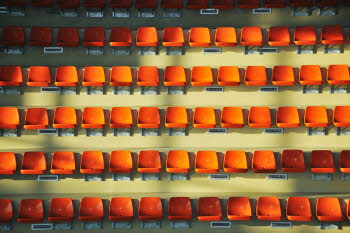
How many people will there be in the crowd watching me?
Not many, there is stadium seating for thousands but there is rarely more than a couple of hundred people in there, often much less. Most of the people watching, will be watching through the video feed.
Try not to worry about how many people may be watching, because, most skaters including myself and my partner find that , as soon as the music starts, you will forget about everyone that is there and be purely focused on skating your program.
And finally useful advice whilst staying in Oberstdorf
How long does it take to get used to the altitude in Oberstdorf?
Allot of people feel no adverse affect of the altitude in Obersdorf at all. Me personally, I did. I found that it took me about three days to totally get used to it. The affects that I felt, was not shortness of breath, it was more, you get tired easier, then again, i am not exactly Mr fit. Though I must say, that I had such a long journey there, it probably took me three days to recover from that.
I noticed that my mouth and lips seem to get dryer easier, but on the whole, after the first couple of days, I got used to it. So I guess if I have any advice, its, if you have the option to arrive a couple of days before your competition, then do so. It will help you get used to the altitude, it does get allot easier after two or three days. That said, if you don’t have much chance to get used to the altitude, then don’t worry too much. Oberstdorf is 813 metres (2667 feet), so its not Everest, but you will probably notice a bit of difference, but not too much.
Food shopping in Oberstdorf – getting the supplies in!
There are three or four decent supermarkets in Oberstdorf. I can tell you about the couple that we used.
Lidl – There is a Lidl pretty much near the center of town. Its not exactly the most expansive of supermarkets, but you will get enough supplies for a couple of days. We went to the Lidl first, on the day we got arrived, because we recognized the name. We managed to get some pizzas, milk and cereal, sugar etc. So not too bad. Its a Lidl, so of course the prices are very reasonable.
Rewe – This is a great supermarket. Its just on the outskirts of town. On the road out. We had a hire car, but if you are without a car, it might be worth getting a taxi, especially if you are carrying a few bags of shopping back.
The Rewe is great. Its a chain store. We saw loads of Rewe’s wherever we went in Germany. Its big and there is loads of choice. There is fresh produce, a meat counter, its a large supermarket and has everything you need. Well worth traveling a bit further for.
Eating out in Oberstdorf
Zorans – This is the resturant above the rink. Dont be put off by the fact its over the rink, it’s really good. It has a decent sized menu and every meal that we had there was lovely. It has waiter service and good beer. The meals are tasty and range from about 10 to 15 euros. There is a balcony outside that runs the length of the restaurant where you can eat and drink, with lovely views of the mountains. There is also a side of the restaurant that overlooks rink 3, so you can watch people practicing their program whilst you eat. I would highly recommend Zorans, its good food reasonably priced. Especially if you have recently arrived in the town, Zorans is a reliable eatery.
Other eateries in Oberstdorf – There are plenty of restaurants in Oberstdorf and plenty of selection of types of food. Most restaurants dont tend to open until about six pm and most of the cafes close at five, so there isn’t really that many places to eat between five and six other than Zorans and bars that have restaurants attached.

Drinking out in Oberstdorf
There are plenty of bars in Oberstdorf. Its not a very big town, but it is a tourist destination, so there are always four or five bars open on an evening. So if you are out to celebrate your recent first place victory, there are several establishments happy to help.
The local beer, or at least the beer I saw most is Allgauer. Its a really nice light beer, with a nice ‘hoppy’ flavor. Really worth a try.
Oberstdorf Premium/premier card
When we arrived at out apartment we found some small credit card sized plastic cards for each of the occupants of the apartment. We didn’t know what they were for at first. It does depend on who you book with, as to whether you get one of these cards. We later found out that it gives you free parking at selected locations around Oberstdorf, you have to scan it into certain parking machines. It also gives you free admission to the Nebelhorn cable car, which is worth quite a few euros.
Town tax
Don’t get caught out by the town tax. There is a tax that you have to pay for staying in Oberstdorf. For us it was 76 euros for four people. We left this with the request at our apartment. It is worth finding out from your accommodation provider if this is included in the price of your holiday. Ours was not, so we had to scratch around for the last few euros at the last minute just before we left the apartment.

